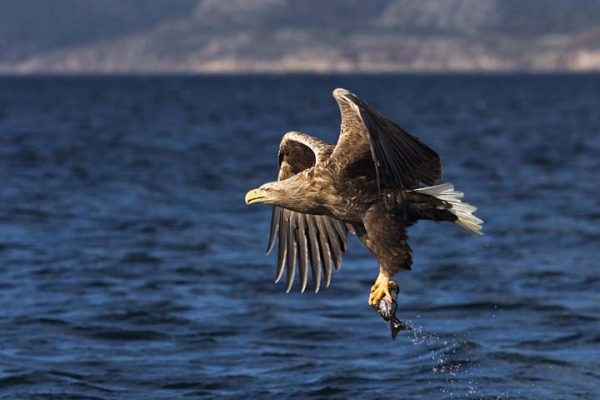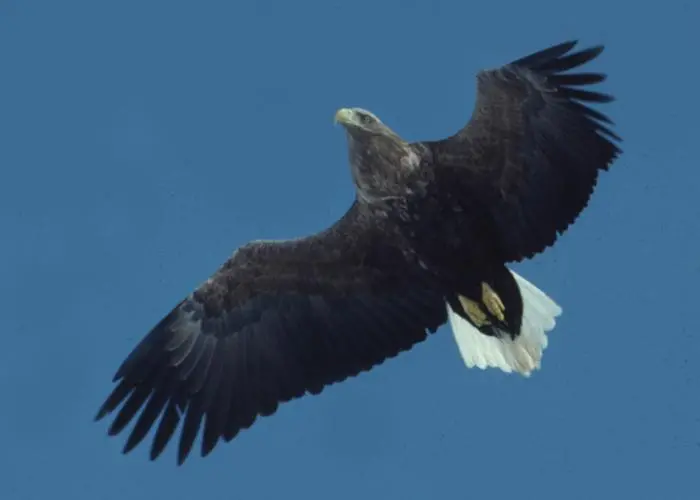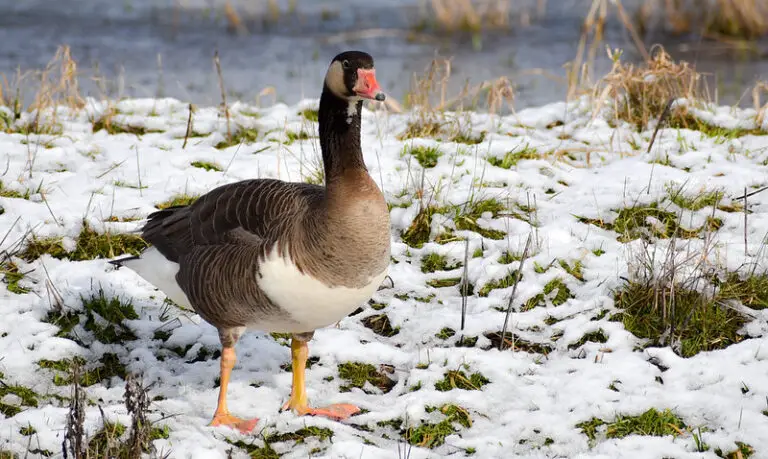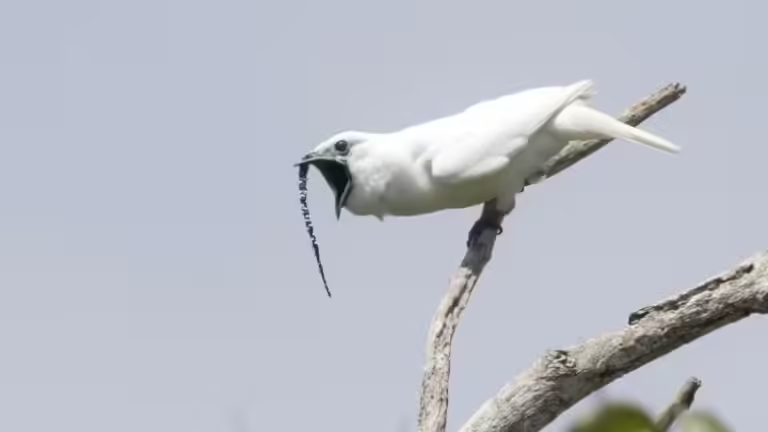As you stand at the forest’s edge, the trees part like sentinels, revealing a glimpse of majesty – but is it a White tailed Eagle? To be sure, you’ll need to scrutinize every detail. You’ll start by sizing up this bird, taking in its massive wingspan and rectangular shape. But that’s just the beginning. You’ll need to examine the subtle sheen on its brown feathers, the curve of its beak, and the deliberate pace of its flight. With each observation, the puzzle pieces will fall into place – but only if you know where to look. Can you spot the signs that set this regal bird apart?
Key Takeaways
- Look for a large bird with a 1.8-2.4 meter wingspan, broad and rectangular wings, and a prominent keel.
- Check for brown plumage with subtle sheen, soft and fringed edges, and a mottled camouflage-like effect.
- Identify the beak shape and strength: curved for tearing flesh, straighter for scavenging, and hooked for grasping and tearing prey.
- Observe the head and neck characteristics: broad and flat head, white throat, and darker brown lower neck and nape.
- Note the flight patterns: slow, deliberate, and circular or elliptical route, often hovering around 500-1000 meters above ground level.
Size and Wing Span
The White-tailed Eagle’s impressive size and wing span are among its most distinctive features.
When you observe this bird, you’ll notice that it measures between 69-92 cm in length, with a wingspan ranging from 1.8 to 2.4 meters.
These dimensions make it one of the largest birds of prey in the world.
You’ll also notice variations in wing shape, which can help with identification.
The White-tailed Eagle’s wings are broad and rectangular, with a subtle curvature.
This shape allows for efficient soaring and gliding, making it well-suited to its coastal and mountainous habitats.
In terms of body proportions, the White-tailed Eagle has a relatively long tail and short legs.
Its body shape is also characterized by a prominent keel and a deep chest, which provide additional lift and stability during flight.
These physical adaptations enable the eagle to excel in its environment, making it a formidable hunter and scavenger.
Plumage Patterns and Colors

Its brown plumage, with a subtle sheen, is a distinguishing feature of the White-tailed Eagle.
You’ll notice the feathers have a soft, fringed appearance, particularly around the edges, which helps to distinguish this species from others.
The brown coloration varies in intensity, with a richer, darker tone on the upperparts and a lighter, more russet hue on the underparts.
Examine the feather edges closely, as they’re an important identification feature.
You’ll see that they’re pale, often creamy or buff-colored, and slightly serrated.
This serration is more pronounced on the secondary feathers, giving them a characteristic “toothed” appearance.
Color intensity is also crucial in identifying the White-tailed Eagle.
The brown plumage isn’t uniform, with areas of greater intensity on the wings, back, and tail.
The pale feather edges and subtle color variations create a mottled, camouflage-like effect, helping the bird blend into its surroundings.
Pay attention to these subtle details, and you’ll increase your chances of accurately identifying a White-tailed Eagle.
Beak Shape and Strength
When identifying a White Tailed Eagle, you’ll want to examine the beak’s size, as a larger beak typically indicates a more mature bird.
The beak’s curvature is also telling, with a more curved beak suggesting a bird that’s adapted for tearing flesh, while a straighter beak may indicate a bird that’s more inclined to scavenge.
The strength of the beak, whether it appears strong and sturdy or weak and brittle, can also provide valuable clues about the bird’s age, health, and habits.
Beak Size Matters
Perched atop a branch or swooping down to snatch prey, you’re likely to notice the White Tailed Eagle’s beak, a vital tool in its hunting arsenal.
Beak size matters, and in the case of the White Tailed Eagle, it’s a crucial identification feature.
A well-proportioned beak is essential for this apex predator, as it enables efficient hunting and feeding.
When examining the beak, pay attention to the following key characteristics:
- Beak proportion: The beak should be in proportion to the eagle’s head size, with a length of around 7-8 cm (2.8-3.2 in).
- Beak symmetry: A symmetrical beak is essential, with both mandibles (upper and lower beak) being evenly sized and shaped.
- Beak strength: A strong, sturdy beak is necessary for tearing flesh and crushing bone, and should appear robust and powerful.
- Beak shape: The beak should be hooked, with a gentle curvature, ideal for grasping and tearing prey.
Curved or Straight
Curved or Straight
Examine the White Tailed Eagle’s beak shape and strength, and you’ll notice a subtle yet vital detail: the curvature. The beak’s curvature is crucial in identifying the species. A curved beak indicates a stronger, more powerful eagle, adapted for tearing flesh and breaking bones. On the other hand, a straight beak suggests a weaker eagle, better suited for hunting smaller prey.
| Beak Curvature | Wing Curvature | Eagle Characteristics |
|---|---|---|
| Highly curved | Strong wing curvature | Strong, powerful eagle; adapted for tearing flesh and breaking bones |
| Moderately curved | Moderate wing curvature | Average strength; suitable for hunting small to medium-sized prey |
| Slightly curved | Weak wing curvature | Weaker eagle; better suited for hunting small prey or scavenging |
| Almost straight | Very weak wing curvature | Very weak eagle; likely to scavenge or hunt extremely small prey |
| Straight | No wing curvature | Not a White Tailed Eagle; possibly a different species |
Observe the beak’s curvature in relation to the wing’s curvature. A highly curved beak typically corresponds to strong wing curvature, indicating a powerful eagle. Conversely, a straight beak often accompanies weak wing curvature, suggesting a weaker eagle.
Strong or Weak
Most White Tailed Eagles boast a robust beak, a hallmark of their predatory prowess, but some individuals exhibit weaker beak shapes and strengths.
You’ll need to examine the beak’s shape and strength to determine if it’s strong or weak. A strong beak is typically thick, curved, and hooked, indicating powerful jaws and a robust skull.
This is often accompanied by a strong wing strength, enabling the eagle to soar and glide effortlessly.
Some key characteristics to look for include:
- A strong, muscular tone around the beak’s base, indicating powerful jaw muscles
- A prominent, curved upper mandible that’s well-suited for tearing flesh
- A beak that’s proportionate to the eagle’s head size, with a smooth, even curvature
- A lack of wear or damage to the beak’s surface, suggesting a strong, resilient structure
Head and Neck Characteristics

When examining a White Tailed Eagle’s head and neck, you’ll notice its distinctive head shape, which is broad and flat with a short, rounded forehead.
The neck’s feather patterns are also crucial for identification, featuring a white throat and upper neck, with a darker brown lower neck and nape.
Additionally, pay attention to the beak’s coloration, which can vary from dark gray to yellow, depending on the eagle’s age and environmental factors.
Eagle’s Distinctive Head Shape
As you examine the White Tailed Eagle’s head, you’ll notice its distinctive shape, which sets it apart from other large raptors.
The head silhouette is broad and rounded, with a flat forehead that slopes gently towards the beak. This unique combination of features gives the White Tailed Eagle a characteristic “flat-faced” appearance.
Some key characteristics to look for when examining the head shape include:
- A broad, rounded crown that’s often covered in feather tufts, giving it a slightly tousled appearance
- A flat, broad forehead that’s parallel to the beak
- A strong, hooked beak that’s well-suited for tearing flesh
- A subtle, rounded curve to the rear of the head, which helps to distinguish it from other eagle species
Neck Feather Patterns
Beyond the White Tailed Eagle’s distinctive head shape, its neck feather patterns offer additional key identifiers. As you observe the eagle’s neck, take note of the feather density and arrangement, as these characteristics can be crucial in identification.
The neck feathers of a White Tailed Eagle are typically dense and fluffy, with a distinctive ruffiness around the neck area. This ruffiness is more pronounced in younger birds or during certain times of the year. To aid in your identification, refer to the table below, which highlights key differences in neck feather patterns between White Tailed Eagles and similar species.
| Species | Feather Density | Neck Ruffiness | Feather Arrangement |
|---|---|---|---|
| White Tailed Eagle | Dense, fluffy | Pronounced, especially in young birds | Long, curved feathers around neck |
| Golden Eagle | Less dense, more sleek | Minimal, smooth | Shorter, more upright feathers around neck |
| Lesser Spotted Eagle | Sparse, wispy | Absent, smooth | Short, stiff feathers around neck |
| Greater Spotted Eagle | Dense, but less fluffy | Moderate, slightly ruffled | Long, curved feathers around neck |
Beak Coloration Variations
Observe the White Tailed Eagle’s beak, and you’ll notice that its coloration varies depending on the bird’s age and wear.
As you examine the beak, you’ll see that the coloration isn’t uniform and can provide valuable clues for identification.
– Juvenile beaks tend to have a darker, more horn-colored base that gradually lightens towards the tip, with a yellow or orange beak tip pigment.
This pigment can wear off over time, revealing a paler base color.
- Immature birds (up to 4-5 years old) may retain some of this juvenile coloration, but with a more mottled appearance.
- Sub-adult birds (around 5-7 years old) typically display a more uniform yellow or orange beak color, although some may still show remnants of the juvenile pattern.
- Adult birds, meanwhile, typically have a bright yellow beak with a slight orange tint, although this can vary depending on the individual bird’s age and environmental factors.
Tail Feathers and Leg Markings
Among the White Tailed Eagle’s most distinctive features are its tail feathers and leg markings, which you’ll want to examine closely for identification purposes.
The tail feathers are long and broad, with a rounded tip, and typically measure between 20-25 cm in length. Observe the tail feather shape, noting its rectangular shape with a slight wedge at the end.
Moving on to the leg markings, you’ll notice the feathering on the legs is white, extending up to the tarsi.
The leg feather colors are crucial for identification, as they can vary from pure white to a slight yellowish or brownish tint. Take note of the feathering pattern on the legs, which should be uniform and symmetrical.
The tarsi themselves are feathered up to the toes, and the toes are strong and sharp, with powerful talons. Pay attention to the color and pattern of the leg feathers, as this can be a key distinguishing feature from other eagle species.
Flight Patterns and Soaring
As you track the White Tailed Eagle in flight, you’ll notice it tends to soar at high altitudes, often hovering around 500-1000 meters above ground level.
This allows it to conserve energy while scanning for prey or monitoring its surroundings.
When examining the eagle’s flight patterns, observe the following characteristics:
- Flight paths: White Tailed Eagles typically follow a slow, deliberate route, often taking a circular or elliptical path to survey their territory.
- Soaring styles: They employ a mix of thermal soaring and slope soaring, using rising air currents to stay aloft for extended periods.
- Wingbeat frequency: The eagle’s slow, powerful wingbeats are usually around 2-3 beats per second, with a slight pause between beats.
- Banking and turning: When changing direction, the eagle banks smoothly, with a gradual roll of its wings, and executes a wide, sweeping turn.
Habitat and Behavioral Clues
Two to three kilometers from a coastline, you’re likely to find White Tailed Eagles inhabiting areas with a mix of open water, wetlands, and forest edges. These habitats provide an ideal setting for the eagles to hunt, roost, and nest. When identifying White Tailed Eagles, pay attention to their nesting habits, as they often build large nests (up to 2 meters in diameter) in trees or on cliffs, usually 10-20 meters above the ground.
| Behavioral Clue | Description |
|---|---|
| Perching behavior | White Tailed Eagles often perch in trees or on power poles, usually with a commanding view of their surroundings. They may also be seen perched on the ground, especially in areas with limited tree cover. |
| Hunting behavior | These eagles are skilled hunters, often swooping down from a perch to catch fish, small mammals, or birds. They may also scavenge for carrion. |
| Roosting behavior | White Tailed Eagles are known to roost in large groups, often on trees, cliffs, or even the ground. They may also roost on power lines or other elevated structures.
FAQs: White Tailed Eagles
Can White Tailed Eagles Be Found in Urban Areas?
You’ll rarely find White tailed Eagles in urban habitats, as they typically shun city dwellers, preferring remote, undisturbed areas with abundant food sources, such as coastal cliffs, forests, and wetlands, where they can thrive without human disturbance.
Do White Tailed Eagles Migrate or Stay Local?
You’re wondering if these majestic birds of prey stick to their familiar haunts or take flight to distant lands. Well, white tailed eagles are partial migrants, with some individuals wintering near their breeding grounds, while others venture to lower latitude winter ranges.
Are White Tailed Eagles Aggressive Towards Humans?
You’ll find that white-tailed eagles aren’t typically aggressive towards humans, as they’re wary of humans and tend to avoid confrontations, but fear factors like habitat encroachment and human tolerance can lead to defensive behavior in rare cases.
Can White Tailed Eagles Swim and Dive Like Other Eagles?
You’ll find that white-tailed eagles, with their water-repellent eagle feathers, are adept swimmers and divers, employing stealthy hunting tactics to catch fish, and can even submerge themselves completely to snatch unsuspecting prey from beneath the surface.
Are White Tailed Eagles Endangered or Protected Species?
You’ll find that white-tailed eagles are indeed protected species, primarily due to habitat destruction and hunting. Conservation efforts, such as habitat preservation and species reintroduction programs, have been implemented to increase their populations and ensure their survival.
Conclusion
By now, you’ve distilled the essence of the White-tailed Eagle’s majesty, and it’s time to spread your own wings. With these identification steps, you’ll be well-equipped to spot this regal raptor in its natural habitat, basking in the thrill of discovery. Remember, a White-tailed Eagle’s grandeur is not just in its size, but in the subtleties of its plumage, beak, and flight patterns – and now, you hold the keys to unlocking its secrets.












